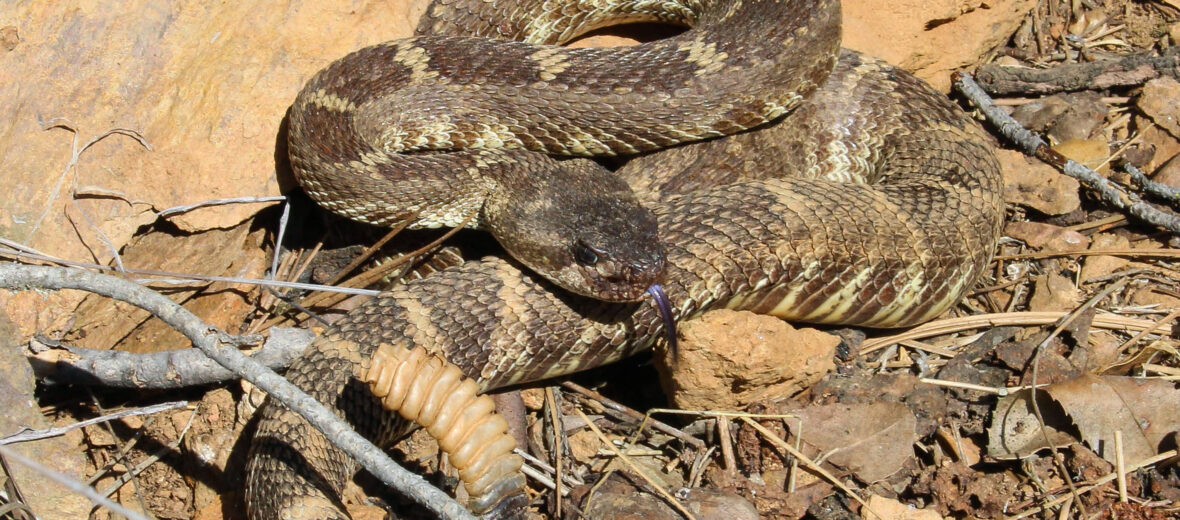
The Northern Pacific rattlesnake, aka western rattlesnake, can be found from Canada, through the western United States, and into Mexico. They prefer brush habitats, grasslands, prairies, and sometimes woods, forests – along streams, rocky ledges, and also caves. Even though they face the threats of habitat loss at the hands of residential and commercial development, as well as agricultural demands; hunting; and trapping, these snakes are still listed as Least Concern by the IUCN. Their populations are considered stable.
First the Stats…
Scientific name: Crotalus oreganus
Weight: Up to 2+ lbs.
Length: Up to 64 inches
Lifespan: Up to 20 years
Now on to the Facts!
1.) These snakes undergo extreme ontogenetic variation (origination and development of an organism), in that juveniles have distinct patterning that changes considerably as they mature.
2.) Birds and their bird eggs, mice, rats, gophers, rabbits, reptiles, and amphibians are all on the menu.
3.) Juvenile snakes prey on insects, primarily.
4.) Male snakes reach sexual maturity in 2 – 4 years, while females reach maturity in 3 – 7 years.
5.) Snakes in the northern most part of their range have been known to first reproduce as late as 8 years of age.
But wait, there’s more on the Northern Pacific rattlesnake!
6.) Wild females undergo up to a 90 day gestation (pregnancy), while captive snakes undergo up to a 425 day gestation.
7.) Like other vipers, they are viviparous (producing live young).
Did you know…?
These are the only known venomous snake in the North Pacific.
8.) Females can birth up to 15 young snakes in August or September. More have been reported, but not confirmed.
9.) Their venom can cause muscle breakdown known as rhabdomyolysis, as well as flaccid paralysis, in some bite victims.
10.) These snakes are considered medically significant and medical attention is necessary to avoid potential death.
Now a Short Northern Pacific Rattlesnake Video!
Be sure to share & comment below! Also, check out the Critter Science YouTube channel. Videos added regularly!
Want to suggest a critter for me to write about? Let me know here.
Some source material acquired from: Wikipedia & IUCN
Photo credit: Connor Long



